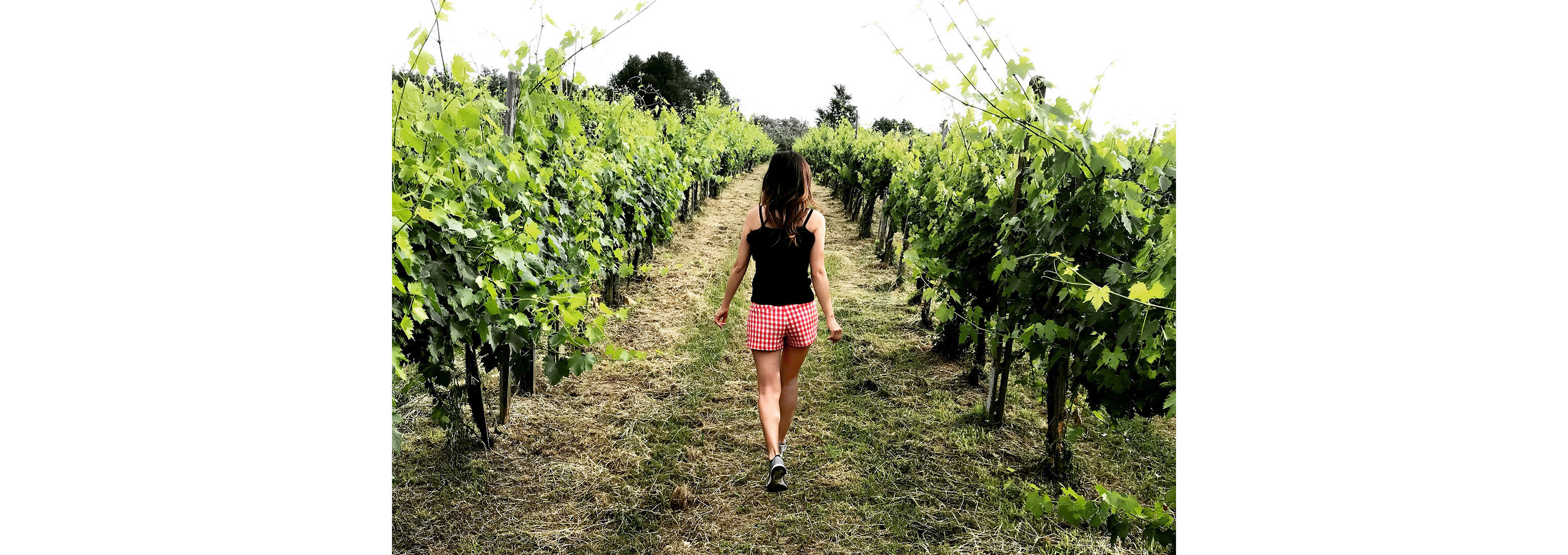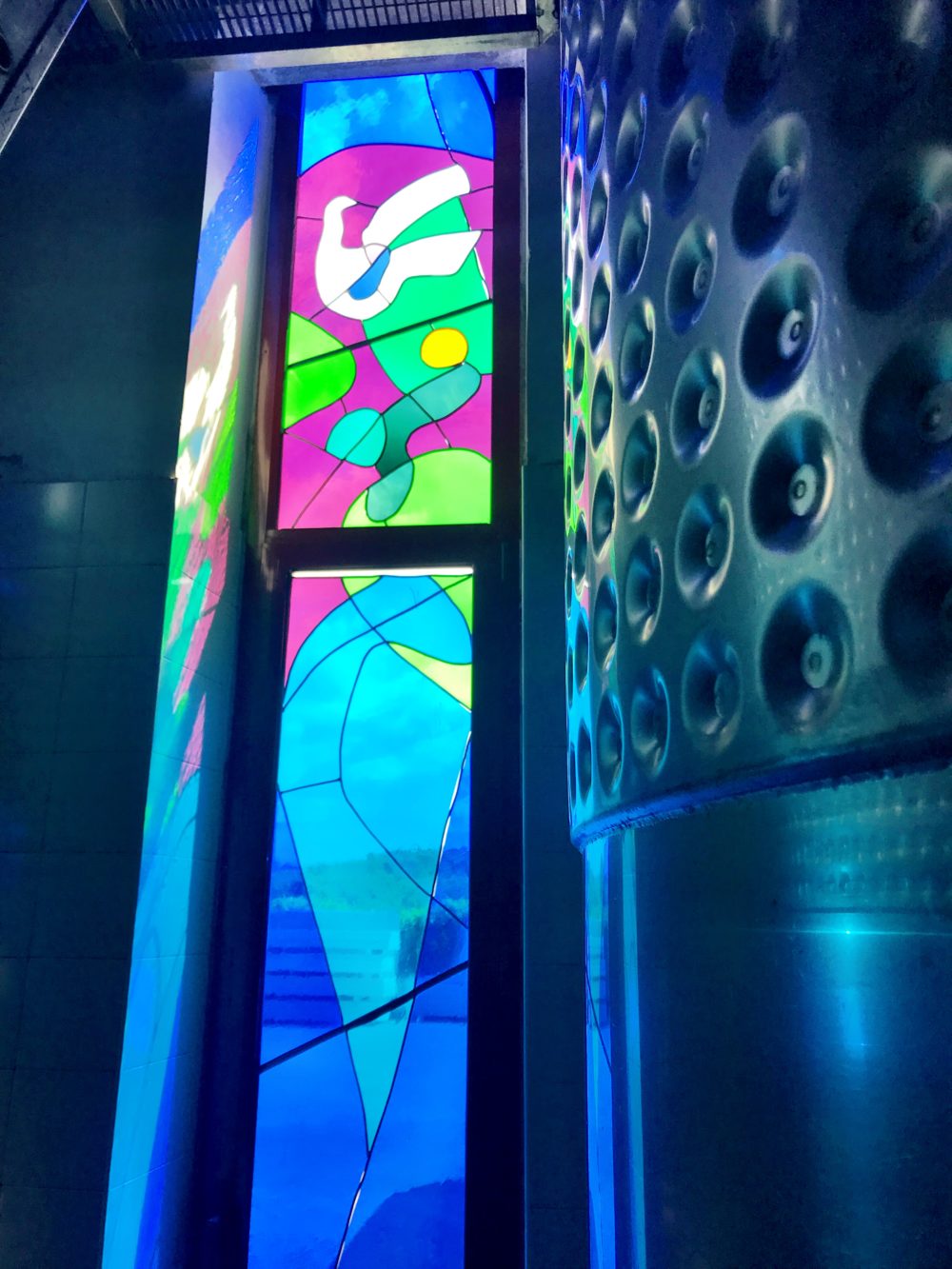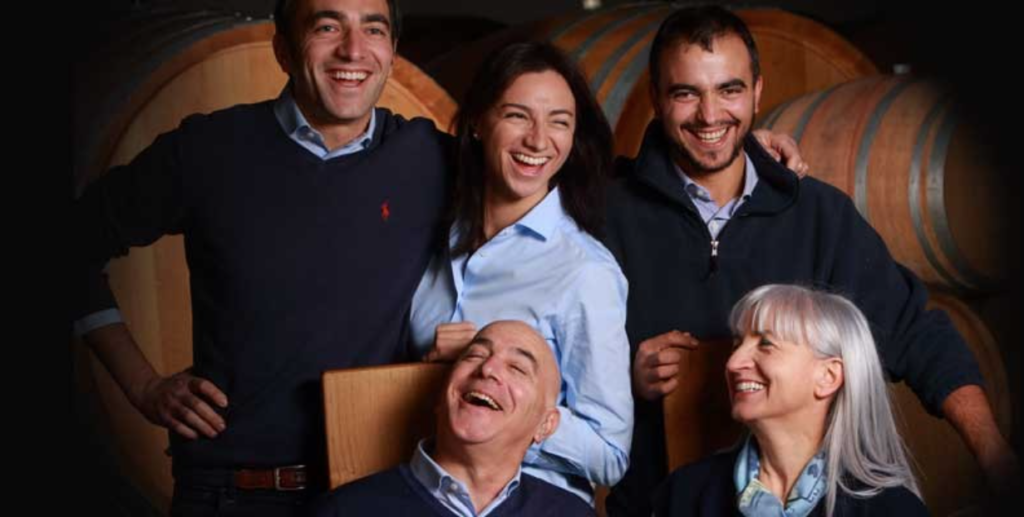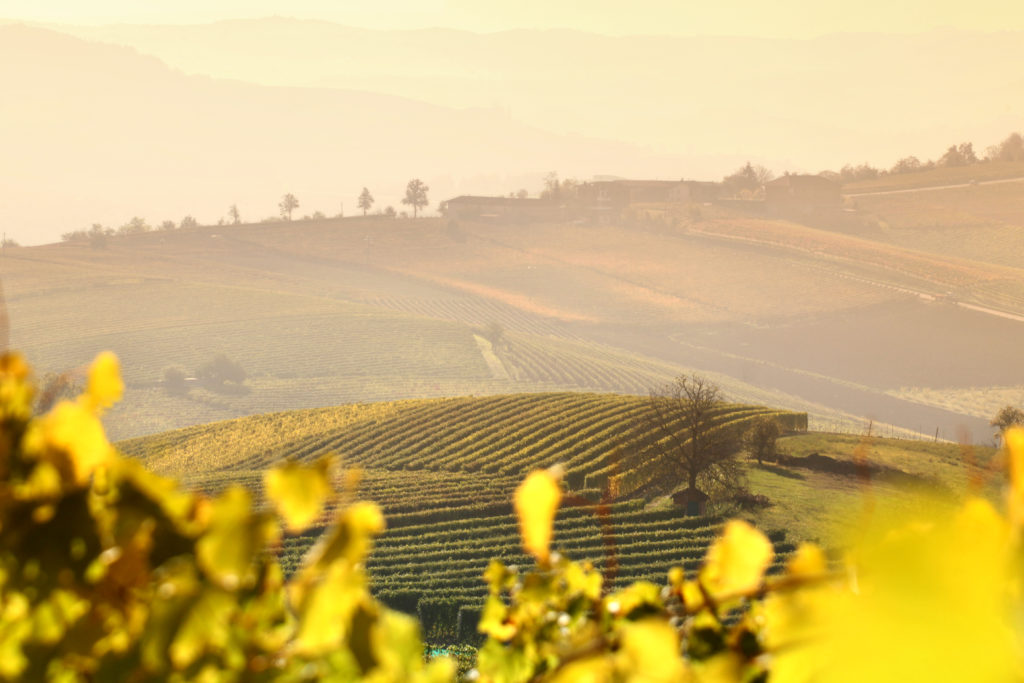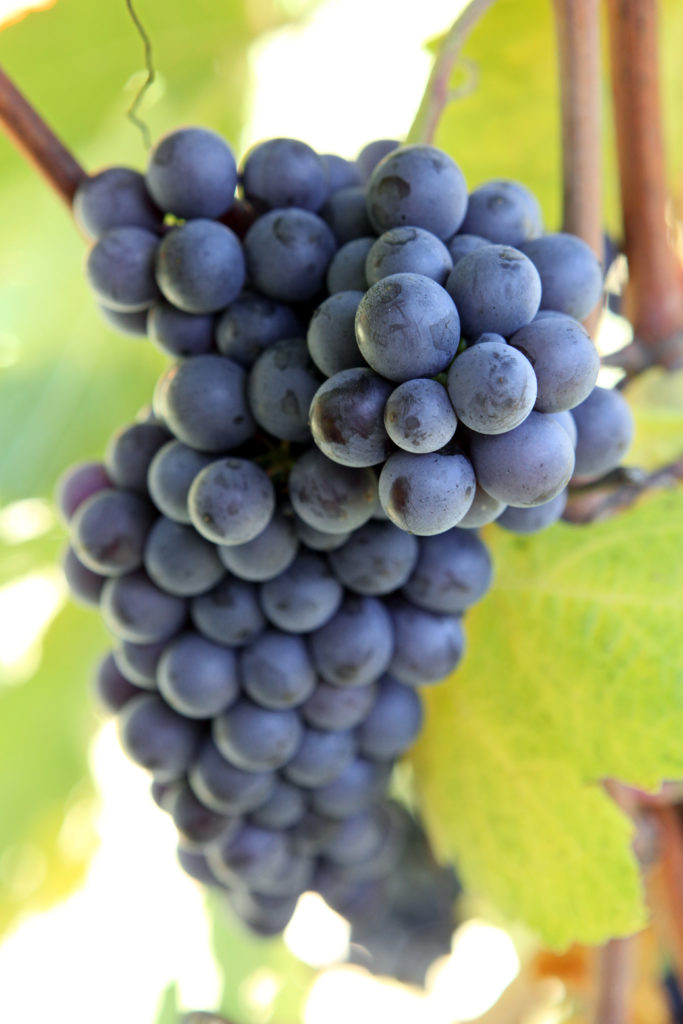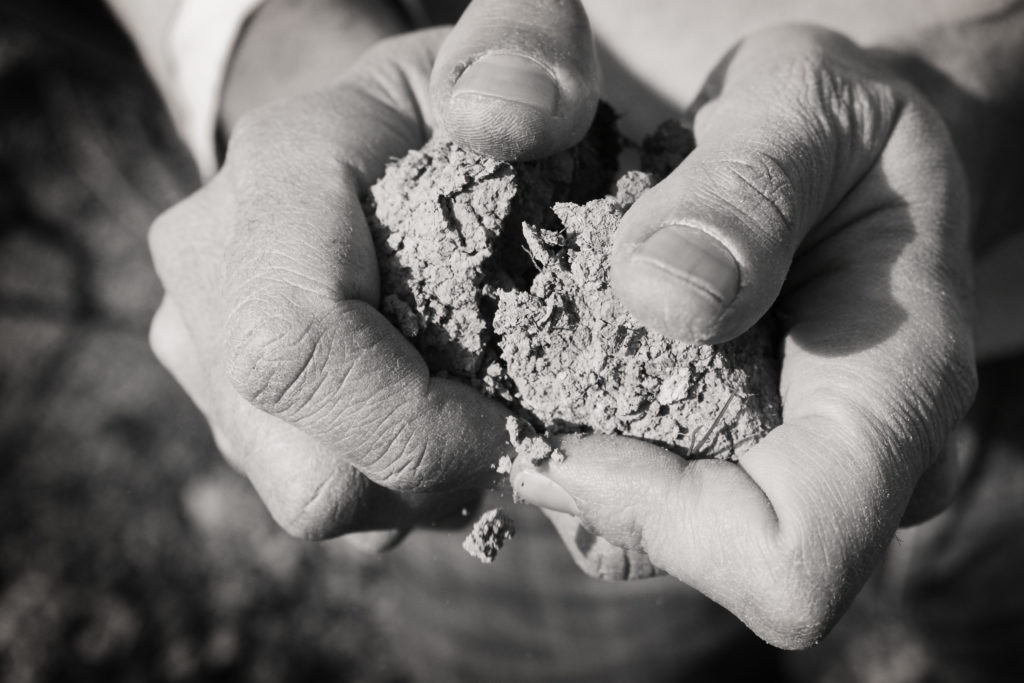Standing next to a glistening stainless steel fermentation tank in the cellar of G.D. VAJRA winery, Francesca Vaira draws attention to the stained-glass windows. While the design does not directly reference winemaking, it has everything to do with her family’s philosophy and style, she says. In the hamlet of Vergne, a few miles west and high above the village of Barolo, G.D. VAJRA is a pioneer among Barolo producers, established in the 1970s by Francesca’s father, Aldo Vaira. He had the vision to build an organic operation well before it was a glimmer in other producers’ eyes.
The family – siblings Giuseppe, Francesca, Isidoro and parents Milena and Aldo – often regard themselves as instruments of nature, enabling their surrounding environment and terroir to fully express themselves through their wines.
Each day is a celebration of the land and its native grapes — Nebbiolo, Freisa, Dolcetto, Barbera and others — which are all reflected in their wines. The Vairas incarnated their distinctive way of thinking with a wine cellar that is far from cold and clinical. Instead, the cellar conjures reflection, reverence and inspiration.The windows are made of vibrant colors that commingle, the sun’s rays providing subtle to vigorous strokes of light. At this moment, it’s blue and magenta. With the Earth’s rotation, they evolve and then dissolve into yet another spectrum.“Four hundred times a day, the light is different,” Francesca said. “This reminds us that the little details are making the difference!”Padre Costantino Ruggeri, a Franciscan monk and artist, recognized the sensitivity of this place, the Vaira family and their dreams. In turn, they trusted his skill and ingenuity, providing no guidance to the creation of the glass panels for their estate.
“That was a key time for us,” Francesca said. “We realized that when you are a true artist, you’re not expecting anyone else to tell you what to do. You do it! Through this we realized that nature is the true artist. We try to transmit the beauty to the wines.”
The link between the two embodies the spirit of the Vaira family. While looking at the windows, she says, “It’s good way to stay humble, but at the same time keep the tension high.”
Craftsmanship is the fabric woven through all the details of their labor — from painstaking work in the vineyard to meticulous triple sorting of grapes.
“It is propelled by enthusiasm and nurtured by the most important terroir, the heart of each person of our team,” Aldo Vaira said. When speaking with any member of the Vaira family, one is compelled to go beyond the technical aspects of the wines and embark on the family’s journey that goes into making the wines.
But technical, they can be. Isi points to some rocks and asks,“What do you think this is? And which vineyard is this soil taken from? Bricco delle Viole? San Rocco?” Ask anyone in the family and he or she can explain the intricacies of geologic time scales and events, the behavior of sediments, the vineyard’s site personalities, aromas and flavors.
Their enthusiasm is sparked by their continual discovery of the land, from the beginning of time to present. It is their own journey in wine. “We all learn something everyday,” Isi said.
As wine producers and organic farmers, they deliver a complement of nature’s gifts. Their single vineyard Bricco delle Viole Barolo, the highest in elevation among the historical vineyards with its proximity to the Alpine range, generates a Barolo of finesse and bright aromatics. “It’s like a classic ballerina who wants to be the lightest on the stage, but you know how much effort and muscle it takes,” Francesca said.“This is Bricco delle Viole — it’s a lot of work trying to be the most delicate.”
Albe, identifiable by the red sun on the label, is a harmonious assemblage of Barolo crus. The sun symbolizes its rise three times each morning over their vineyards. “It’s the exceptional simplicity of nature that makes the awakening of life an everyday miracle,” Milena Vaira said.
G.D. VAJRA’s Coste & Fossati is a selection of vintage Dolcetto biotypes, which had been handpicked by Aldo in the late 1970s to mid 1980s, then grafted into their Barolo vineyards to produce vines with peculiar red stalks, creating a limited production of intense and dark Dolcetto.
If Barolo and Barbaresco are the king and queen of Italian wines, perhaps Barbera is the prince. G.D. VAJRA’s Barbera d’Alba Superiore comes from old vines that date back to 1949. It is a wine of intensity, and of course, expressive charm.
Then there’s the cask-aged Kyé made from the native and rare grape Freisa. As the closest relative to Nebbiolo, Freisa is “like The Last of the Mohicans, noble and wild, fighting for survival,” Giuseppe said.
Langhe Bianco renders homage to the Riesling. A superb exercise of biodiversity, G.D. VAJRA’s Riesling features ancient cuttings from Alsace, Pfalz and Rhine and shows no shortage of personality.“This is a wine that reflects the pioneering soul of G.D. VAJRA,” Francesca said.
The family wanted all these wines to come to fruition in an enlightened environment. The stained-glass windows reflect the symbiosis between nature and humankind.
Their concept of what wine can be springs from their deep passion and respect for nature. It’s authentic, simple and honest. It stems from their response to nature’s need for absolute dedication, patience and time. Their wines are a result of nature itself asking to be loved — for better or for worse, in abundance or in scarcity — and guarded with the tenderness of family.
